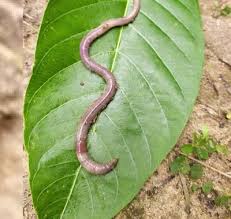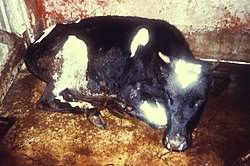Today’s Current Affairs: 17th June 2025 for UPSC IAS exams, State PSC exams, SSC CGL, State SSC, RRB, Railways, Banking Exam & IBPS, etc
Table of Contents
Synthetic Aperture Radar:

NASA said the NASA-ISRO SAR mission had arrived at ISRO’s spaceport in Sriharikota.
- Synthetic Aperture Radar is a type of active data collection where an instrument sends out a pulse of energy and then records the amount of that energy reflected back after it interacts with Earth.
- SAR imagery is created from the reaction of an emitted pulse of energy with physical structures (like mountains, forests and sea ice) and conditions like soil moisture.
- It is a way to make sharp pictures even when it’s dark or cloudy.
- Synthetic Aperture Radar systems send out microwave pulses and record the echoes that bounce back from the ground, ocean, ice or buildings.
- Then, clever signal processing turns those echoes into detailed images.
- The key element is the antenna that receives the echoes. Usually, the longer a physical antenna, the better the resolution — but a large antenna is hard to build and maintain.
- On a SAR, a small antenna is carried on a moving platform like a satellite. As a result each echo is recorded at a slightly different position.
- By stitching them together with precise timing and phase information, software can help mimic a single antenna hundreds of metres long.
- Since microwaves penetrate clouds, smoke, and even light rainfall, SAR can collect data 24/7. If a SAR unit is mounted on an orbiting satellite, it can map swaths of land hundreds of kilometres wide in a single overpass.
- Different materials like soil, vegetation, water and metals reflect microwaves differently, allowing SAR to detect changes invisible to optical sensors.
Extended Trajectory-Long Duration Hypersonic Cruise Missile (ET-LDHCM):

India is preparing to test its most advanced indigenously developed hypersonic missile—the Extended Trajectory-Long Duration Hypersonic Cruise Missile (ET-LDHCM).
- Extended Trajectory-Long Duration Hypersonic Cruise Missile (ET-LDHCM) is a long-range hypersonic cruise missile.
- It is indigenously developed by India’s Defence Research and Development Organisation (DRDO) under a classified initiative known as ‘Project Vishnu’.
- Designed for launch from land, sea, or air, the missile enhances India’s flexibility across strike platforms and mission types.
- Once operational, it will place India among the handful of nations, including the US, China, and Russia, to field hypersonic weapon systems.
- The ET-LDHCM system reportedly reaches speeds up to Mach 8, or about 11,000 kmph.
- Designed for both conventional and nuclear missions, the missile can carry warheads weighing between 1,000 and 2,000 kg over a range of approximately 1,500 km.
- Unlike ballistic missiles, the ET-LDHCM flies at low altitudes and is capable of course correction mid-flight.
- Its speed, altitude-hugging flight profile, and mid-air manoeuvrability are designed to evade modern radar and air defence systems, enabling deep strikes into adversary territory.
- Powered by a scramjet engine that uses atmospheric oxygen to sustain high speeds, the missile marks a major propulsion breakthrough.
- Built with heat- and oxidation-resistant materials, it can withstand extreme temperatures exceeding 2,000 degree celsius.
Valley Fever : New Study

A new study suggests dogs could play a surprising role in public health by helping detect the early spread of Valley fever.
- Valley fever, also known as acute coccidioidomycosis, is a fungal infection caused by coccidioides organisms.
- Two coccidioides fungi species cause valley fever. These fungi are commonly found in soil in specific regions.
- They are found in the Pacific Northwest and southwestern United States, and parts of Mexico, Central America, and South America.
- The fungi’s spores can be stirred into the air by anything that disrupts the soil, such as farming, construction, and wind.
- People can then breathe the fungi into their lungs.
- Pets can also become Valley fever does not spread from person to person or between people and animals.
- The infection starts in the lung It commonly affects people over 60 years of age.
- Most people with an infection by this fungus never have symptoms.
- Others may have cold- or flu-like symptoms or symptoms of pneumonia.
- If symptoms occur, they typically start 5 to 21 days after exposure to the fungus.
- Rarely, the infection spreads from the lungs through the bloodstream to involve the skin, bones, joints, lymph nodes, and central nervous system or other organs. This spread is called disseminated coccidioidomycosis.
- Treatment:
- Mild cases of valley fever usually resolve on their own.
- In more-severe cases, doctors treat the infection with antifungal medications.
- Sometimes surgery is needed to remove the infected part of the lung (for chronic or severe disease).
Kali Tiger Reserve:

Conservation activists have expressed concern over tourism promotion through wildlife safari in the Kali Tiger Reserve.
- Kali Tiger Reserve, earlier known as Dandeli-Anshi Tiger Reserve, is located in the central portion of the Uttara Kannada (North Canara) district of Karnataka.
- It covers an area of 834.16 sq.km.
- It comprises two important protected areas of the region, viz., Dandeli Wildlife Sanctuary and Anshi National Park.
- These two protected areas are contiguous to each other and form a single tract of the protected area located in the biologically sensitive Western Ghats.
- Kali Tiger Reserve shares a border with Bhimgad Wildlife Sanctuary (Karnataka) in the north, which is further connected to Radhanagari and Koyna wildlife sanctuaries in Maharashtra.
- The Kali River, which forms the major source of water for Uttara Kannada, flows through the tiger reserve, and hence the name.
- Forests are primarily moist deciduous and semi-evergreen, with excellent patches of evergreen forests in the westernmost parts as well as in deep valleys.
- The complex floral tapestry comprises hardwood trees like teak, silver oak, Malabar tamarind, jamba, lantana, bamboo, shrubbery, and dense vegetative undergrowth on the floor.
- Animals found in the Tiger Reserve include Tiger, Leopard, Elephant, Bison, Wild dog, Sambar, Spotted deer, Sloth bear, Wild boar, Hanuman langur, Bonnet macaque, varieties of reptiles and birds including all four species of hornbills as its residents., etc.
- The area holds one of the highest populations of Great Indian Hornbills in the Western Ghats.
- It is home to rare black panthers.
Kanchuria tripuraensis and Kanchuria priyasankari:

Two new species of earthworms—Kanchuria tripuraensis and Kanchuria priyasankari—were recently discovered in Tripura, marking a significant contribution to the scientific understanding of soil biodiversity in the region.
- Kanchuria tripuraensis and Kanchuria priyasankari are two new species of earthworms discovered in Tripura.
- Kanchuria tripuraensis has been named after Tripura, where it was found thriving in rubber and pineapple plantations — highlighting the ecological diversity of even agriculturally modified landscapes.
- Kanchuria priyasankari is a tribute to Priyasankar Chaudhuri, whose four-decade-long dedication to earthworm taxonomy has placed Tripura on the national and international map for soil biodiversity studies.
- tripuraensis is unique within its genus for having single ventromedian spermathecae in segments 7 and 8—a distinguishing morphological feature.
- priyasankari, a member of the turaensis species group, is characterised by its comparatively smaller size and a distinctive spermathecal structure that sets it apart from its close relative, K. turaensis.
- With these additions, the genus Kanchuria—which is endemic to Northeast India—the genus count reaches 10.
- This discovery also raises the number of documented megadrile earthworm species in Tripura to 38, cementing the Eastern Himalaya–Northeastern Hills as the second-richest region in India in terms of earthworm diversity.
Grand Cross of the Order of Makarios III:

Prime Minister of India was conferred with the Grand Cross of the Order of Makarios III of Cyprus.
- Grand Cross of the Order of Makarios III is the highest civilian honour of
- It was named after the country’s first President, Archbishop Makarios III.
- It recognises outstanding contributions and achievements.
- The Order of Makarios III, established in 1991, acknowledges exceptional service and contributions to Cyprus or the international community.
- The honour symbolises Cyprus’s appreciation for exceptional service, leadership, or contributions that have positively impacted the country or the world.
- The Order of Makarios III comprises multiple grades, with the Grand Cross being one of the highest honours, possibly second only to the Grand Collar.
- The President of Cyprus typically bestows this award, highlighting the recipient’s achievements and contributions.
- Cyprus is a Eurasian island country located in the extreme northeastern corner of the Mediterranean Sea, south of the Anatolian peninsula (Asia Minor) or modern-day Turkey.
- It is the third largest Mediterranean island after Sicily and Sardinia.
- Major Cities: Limassol, Larnaca, Famagusta, and Paphos.
- Highest Point: Mount Olympus (1,952 m)
- Capital: Nicosia.
Achal Fast Patrol Vessel:

The Achal Fast Patrol Vessel was ceremoniously launched in Goa.
- Achal Fast Patrol Vessel is the fifth Fast Patrol Vessel (FPV) in a series of eight being constructed by Goa Shipyard Ltd (GSL) for the Indian Coast Guard (ICG).
- Designed and constructed under stringent dual-class certification from the American Bureau of Shipping and Indian Register of Shipping,
- The FPV features over 60% indigenous content.
- The vessel measures 52 meters in length and 8 meters in breadth, with a displacement of 320 tons.
- It is powered by a CPP-based propulsion system, the vessel can reach a top speed of 27 knots.
- With its primary roles of protection, monitoring, control, and surveillance, ‘Achal’ is equipped to safeguard offshore assets and island territories.
- Its launch marks another milestone in the long-standing partnership between the Indian Coast Guard and GSL, further reinforcing the collective march towards Aatmanirbharta in defence manufacturing.
- It is built at a total cost of Rs 473 crore, the project has also provided a significant boost to local industry by generating substantial employment and supporting MSMEs engaged in production activities at various factories and within GSL.
Portulaca bharat: Flowering plant species

A new flowering plant species with unusual morphological characteristics has been discovered in the rocky and semi-arid landscape of Aravali hills near Jaipur.
- Portulaca Bharat is a new flowering plant species.
- It is classified as Portulaca bharat, the plant adds to the list of Indian endemics.
- It is currently only known from a single location in the Galtaji hills. Only 10 individuals of this species were found in the wild.
- The plant’s narrow endemism and specific habitat requirements make it highly vulnerable to habitat degradation and climate change.
- It has opposite and slightly conclave leaves and pale-yellow flowers becoming creamish-white towards apex, with the presence of glandular hairs on stamen filaments and thick roots.
- The genus Portulaca currently comprises about 153 species worldwide, primarily found in tropical and subtropical regions.
- These succulent plants are known for their toughness, water-storing tissues, and adaptation to extreme environments.
- In India, 11 species are currently known, including four endemics, mostly distributed in dry and semi-arid habitats.
Rinderpest:

India has secured a prestigious position in global animal health with the designation of the ICAR-National Institute of High Security Animal Diseases (NIHSAD) in Bhopal as a Category A Rinderpest Holding Facility (RHF).
- Rinderpestis also known as cattle plague, is a contagious viral disease affecting cloven hoofed animals (mainly cattle and buffalo).
- It is caused by a virus of the Paramyxoviridae family, genus Morbillivirus.
- Many species of wild and domestic cloven-hoofed animals (including sheep and goats) show only mild symptoms of the disease when infected, but for cattle and buffalo, mortality rates can reach up to 100 percent in highly susceptible herds.
- Other than cattle and buffalo, rinderpest can infect zebus, water buffaloes, African buffaloes, eland, kudu, wildebeest, various antelopes, bushpigs, warthogs, giraffes.
- It is spread by effective contact between animals carrying the virus and susceptible animals. The virus is found in nasal secretions a few days before any clinical signs appear.
- As the disease progresses the virus is found in most body fluids and either death ensues, or the animal recovers, develops immunity and clears the virus from the body.
- In cattle, signs of the disease include fever, erosive lesions in the mouth, discharge from the nose and eyes, profuse diarrhoea and dehydration, often leading to death within 10 to 15 days.
- In other species rinderpest may show milder clinical signs.
- There is no public health risk, since rinderpest does not affect people.
- It historically occurred in Europe, Africa and Asia.
World Crocodile Day:

On World Crocodile Day (17th June), India commemorates 50 years of its Crocodile Conservation Project (CCP) (1975–2025), with Odisha emerging as the epicentre of this pioneering ecological effort.
- Odisha is the only Indian state to host wild populations of all three native crocodilian species (Gharial (Gavialis gangeticus), Mugger crocodile (Crocodylus palustris) and Saltwater crocodile (Crocodylus porosus)).
- India launched its CCP at Odisha’s Bhitarkanika National Park with support from United Nations Development Programme and the Food and Agriculture Organisation.
- It adopted the “rear and release” method, created protected habitats like Bhitarkanika and Satkosia Tiger Reserve, and promoted captive breeding and community awareness, making it a national model for crocodilian conservation.
- Crocodiles are the largest surviving reptiles, primarily inhabit freshwater swamps, lakes, and rivers, with one saltwater species.
Radio Nellikka:

The Kerala State Commission for Protection of Child Rights (KeSCPCR) will launch Radio Nellikka, an exclusive internet radio station for children.
- Radio Nellikka is a child-centric internet radio platform initiated by KeSCPCR to spread awareness, education, and rights-based content tailored for children and their guardians.
- The objective of Radio Nellikka is to promote child rights, safety, and empowerment through accessible, engaging audio content.
- It aims to create a child-friendly Kerala by spreading awareness on laws, mental health, and responsible parenting.
- It Promotes mental health awareness, combats substance abuse, and educates on cyber safety.
- Acts as a direct communication tool to prevent misinformation about child protection laws and orders.
- Enhances children’s access to educational, legal, and emotional support in an engaging format.
- Encourages responsible parenting and societal participation in safeguarding children’s rights.
Cyber Suraksha:

The Defence Cyber Agency has launched ‘Cyber Suraksha’, a national-level cyber security exercise, aimed at enhancing India’s cyber defence readiness.
- ‘Cyber Suraksha’ is a multi-phased cybersecurity drill simulating real-world cyber threats in a high-paced, gamified environment for national-level stakeholders.
- Launched By: Organised by the Defence Cyber Agency (DCyA).
- Objectives:
- Boost cyber resilience at the national security level.
- Train personnel to effectively respond to advanced cyberattacks.
- Foster a security-first culture in defence institutions.
Renowned ISRO Scientist and Tamil Author Nellai Su. Muthu Passes Away:
Nellai Su. Muthu, a former ISRO scientist, acclaimed Tamil author, and recipient of numerous literary accolades, passed away in Thiruvananthapuram, Kerala, on June 16, 2025, at the age of 74. Known for his multifaceted contributions to science communication, children’s literature, and Tamil writing, Muthu leaves behind an enduring legacy of over 170 books across genres, reflecting his passion for both space science and Tamil culture.
Maruti Suzuki Partners with Equitas Bank to Boost Retail Car Financing:
Maruti Suzuki India Limited (MSIL), India’s leading car manufacturer, has entered into a strategic vehicle financing partnership with Equitas Small Finance Bank (ESFB) to offer enhanced retail financing solutions for new cars, used cars, and commercial vehicles. The partnership, formalized through a Memorandum of Understanding (MoU), aims to provide accessible, affordable, and customized financial services to a broader spectrum of Maruti Suzuki customers.The MoU was recently signed between MSIL and ESFB to strengthen Maruti Suzuki’s financing network across India, especially among diverse customer segments. This partnership comes at a time when access to finance is key to boosting vehicle sales, especially in tier-2 and tier-3 markets.
RBI Relocates Andhra Pradesh Regional Office to Vijayawada:
The Reserve Bank of India (RBI) has officially relocated its Andhra Pradesh regional office to Vijayawada. The new office was inaugurated on June 16, 2025, by Deputy Governor T. Rabi Sankar, marking a significant step in enhancing the central bank’s operational effectiveness and outreach in the state.The RBI’s decision to shift its Andhra Pradesh regional office to Vijayawada from the earlier location reflects an effort to streamline regional financial operations and boost accessibility in the heart of Andhra Pradesh. The move is also in alignment with the region’s growing economic importance
International Day of Family Remittances 2025:
Every year on June 16, the world observes the International Day of Family Remittances (IDFR) to honour the remarkable contributions made by migrant workers who send money back home to support their families. These remittances are not merely financial transactions — they are lifelines for millions and enablers of development for countless communities. In 2025, the theme of the day—“Remittances financing development”—underscores the integral role that remittance flows play in achieving the Sustainable Development Goals (SDGs), particularly in Low- and Middle-Income Countries (LMICs).
SIPRI Report: India’s Nuclear Arsenal Expands Amid Global Modernisation
India has reportedly expanded its nuclear arsenal in 2024 and continues to develop new nuclear delivery systems, according to the latest assessment by the Stockholm International Peace Research Institute (SIPRI). The annual report highlights a concerning global trend, with all nine nuclear-armed nations modernising their weapons, signaling the rise of a new nuclear arms race. China has seen the fastest growth in its nuclear stockpile, while India and Pakistan are also enhancing their capabilities.
Highlights from the SIPRI Report India’s Nuclear Expansion
- India slightly expanded its nuclear arsenal in 2024.
- Continued development of new types of nuclear delivery systems.
- Development of canisterised missiles capable of carrying mated warheads.
- These may eventually support multiple independently targetable reentry vehicles (MIRVs).
TCS Joins Hands with CEB to Streamline Financial Operations:
Tata Consultancy Services (TCS) has partnered with the Council of Europe Development Bank (CEB), headquartered in Paris, to streamline the bank’s complex financial transactions. As part of this collaboration, TCS will implement its AI-driven solution, TCS BaNCSTM for Reconciliations, to automate and modernise CEB’s reconciliation processes and increase operational transparency, efficiency, and control. It showcases India’s IT leadership in global financial transformation. It introduces AI and automation into core banking functions of a major European development bank. It aligns with CEB’s mission of improving operational efficiency to support social development projects across Europe.
2025 Canadian Grand Prix:
Mercedes driver George Russell secured his first victory of the season while McLaren teammates Lando Norris and Oscar Piastri collided late in the race. Norris, attempting to overtake Piastri for fourth place, misjudged the move and crashed into his teammate on the pit straight. The incident cost Norris a potential podium and handed Piastri valuable championship points, increasing his lead over Norris to 22 points.
Ankita Raina Clinches 32nd Doubles Title with Alice Robbe at Guimaraes ITF:
Indian tennis ace Ankita Raina partnered with France’s Alice Robbe to claim the doubles title at the $40,000 ITF Women’s Tournament in Guimaraes, Portugal, on June 15, 2025. The duo, seeded fourth, staged a remarkable comeback to defeat Japanese third seeds Hiromi Abe and Kanako Morisaki 1-6, 6-4, [10-8] in a final. This victory marks Ankita’s third doubles title of the 2025 season and the 32nd overall in her professional career




